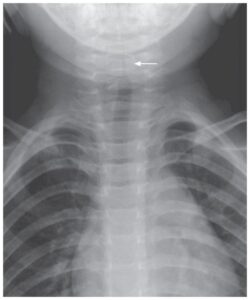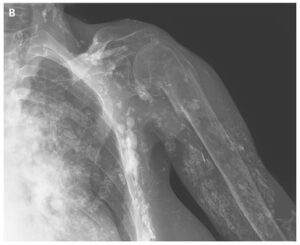This article is an answer to the Case – Patchy, Erythematous, Pruritic Rash
This patient has cutaneous T-cell lymphoma (CTCL), which describes a group of neoplasms of skin-homing T cells. The clinical presentation of this patient is consistent with classical mycosis fungoides (MF).
The course is often indolent, extending over years. Many patients experience several years of nonspecific eczematous and psoriasiform skin findings and non-diagnostic skin biopsies. The median time from the development of skin lesions to the diagnosis of mycosis fungoides is 4–6 years.
In the classical type, the early patch stage is characterized by variably-sized, erythematous, hyperpigmented patches that often involve the buttocks and other covered sites of the trunk and limbs. Progression can lead to infiltrated red-brown plaques (plaque stage MF) and in some patients, nodules and tumours (tumour stage MF).
There are other clinical variants of MF, including folliculotropic MF, hypopigmented MF, pagetoid reticulosis (also known as Woringer–Kolopp disease) and granulomatous slack skin, among others.
Therapy of Cutaneous T-cell Lymphoma
The therapeutic approach to MF is dependent on both the stage of the disease and the age and condition of the patient.
Skin-directed therapies are preferred in early stages of MF (IA–IIA) or limited tumour stage MF (IIB). These include:
- topical or intralesional corticosteroids
- topical chemotherapy (mechlorethamine, carmustine)
- radiotherapy
- phototherapy
Systemic therapy is considered in patients with refractory or progressive skin disease. Some agents that are used in combination are oral retinoids (isotretinoin, etretinate, acitretin, bexarotene), interferon alpha, denileukin diftitox and histone deacetylase inhibitors such as vorinostat and depsipeptide.
Systemic treatment is usually a multi-agent chemotherapy, and the most common regimen used is cyclophosphamide, hydroxydaunomycin, vincristine and prednisone. This is reserved only for patients with lymph node or visceral involvement or in patients with progressive skin tumours recalcitrant to prior treatments.


